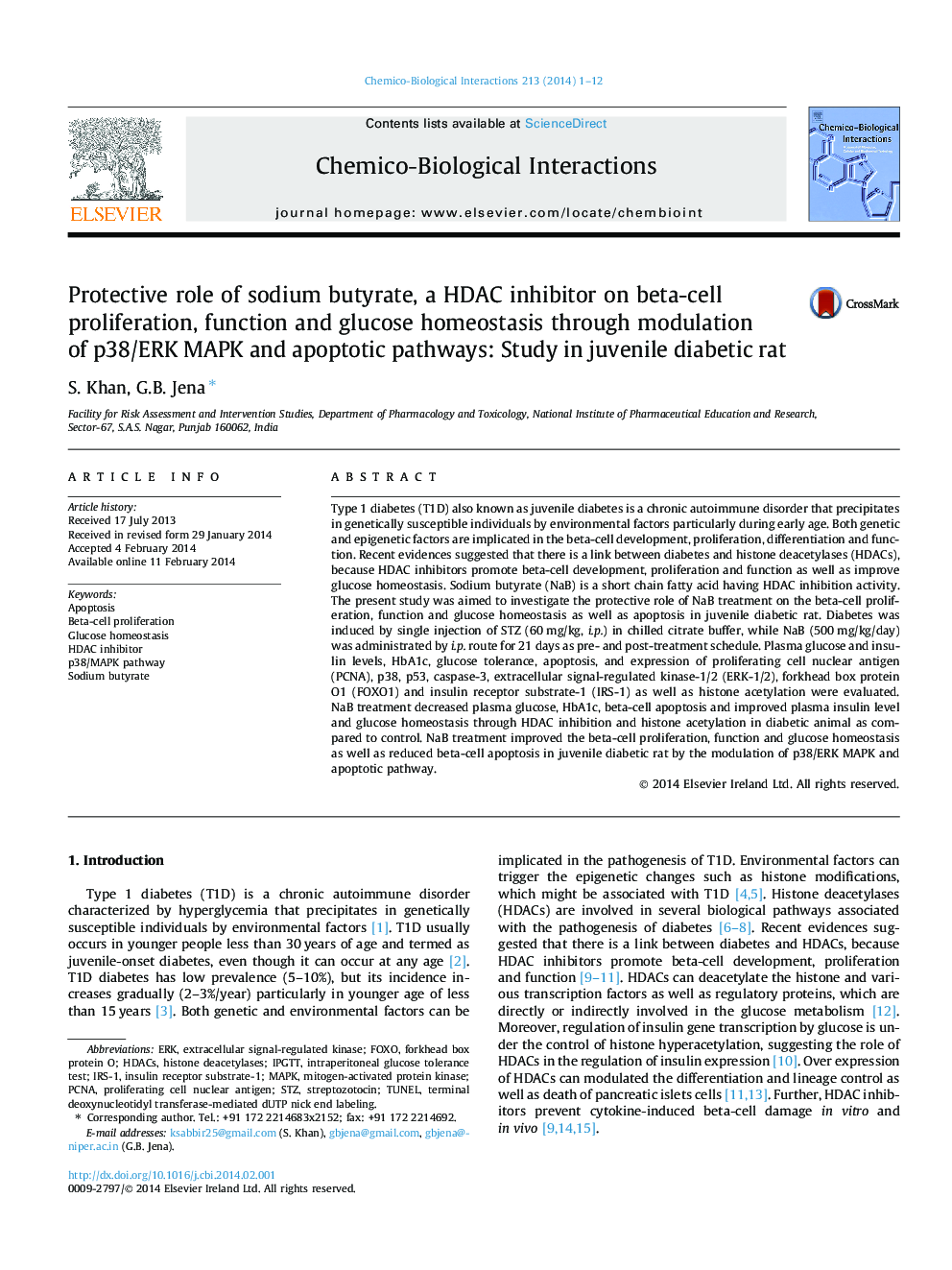| Article ID | Journal | Published Year | Pages | File Type |
|---|---|---|---|---|
| 2580520 | Chemico-Biological Interactions | 2014 | 12 Pages |
•NaB significantly increased the beta-cell proliferation and function in juvenile rat.•NaB significantly improve glucose homeostasis by increased insulin expression.•NaB treatment increased the acetylation of histone H3 and H4 by HDAC inhibition.•NaB significantly decreased the hyperglycemia in induced beta-cell apoptosis.
Type 1 diabetes (T1D) also known as juvenile diabetes is a chronic autoimmune disorder that precipitates in genetically susceptible individuals by environmental factors particularly during early age. Both genetic and epigenetic factors are implicated in the beta-cell development, proliferation, differentiation and function. Recent evidences suggested that there is a link between diabetes and histone deacetylases (HDACs), because HDAC inhibitors promote beta-cell development, proliferation and function as well as improve glucose homeostasis. Sodium butyrate (NaB) is a short chain fatty acid having HDAC inhibition activity. The present study was aimed to investigate the protective role of NaB treatment on the beta-cell proliferation, function and glucose homeostasis as well as apoptosis in juvenile diabetic rat. Diabetes was induced by single injection of STZ (60 mg/kg, i.p.) in chilled citrate buffer, while NaB (500 mg/kg/day) was administrated by i.p. route for 21 days as pre- and post-treatment schedule. Plasma glucose and insulin levels, HbA1c, glucose tolerance, apoptosis, and expression of proliferating cell nuclear antigen (PCNA), p38, p53, caspase-3, extracellular signal-regulated kinase-1/2 (ERK-1/2), forkhead box protein O1 (FOXO1) and insulin receptor substrate-1 (IRS-1) as well as histone acetylation were evaluated. NaB treatment decreased plasma glucose, HbA1c, beta-cell apoptosis and improved plasma insulin level and glucose homeostasis through HDAC inhibition and histone acetylation in diabetic animal as compared to control. NaB treatment improved the beta-cell proliferation, function and glucose homeostasis as well as reduced beta-cell apoptosis in juvenile diabetic rat by the modulation of p38/ERK MAPK and apoptotic pathway.
